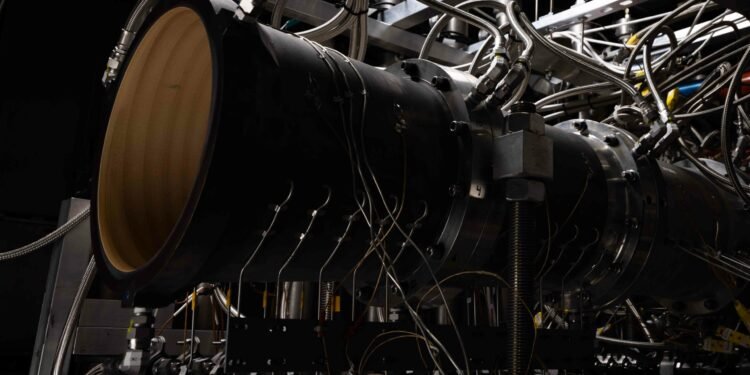GE Aerospace has demonstrated a dual-mode Ramjet (DMRJ) engine that could enable the development of more efficient long-range hypersonic aircraft and missiles.
A threefold airflow increase was demonstrated by the engine compared to previous hypersonic demonstrators, according to the company.
Testing began at an Evendale, Ohio, testing facility in March just 11 months after the launch of design efforts.
“The rapid progression from design to testing underscores our commitment to driving innovation in hypersonic technologies,” president and CEO of Defense & Systems at GE Aerospace Amy Gowder said.
“This milestone not only shows the exceptional talent and dedication of our team but also reaffirms our position as a leader in the pursuit of hypersonic flight.”
Bohemia, New York-based Innoveering— a company acquired by GE in 2022 that specializes in hypersonic propulsion — and GE Aerospace’s Research Center collaborated on the effort, led by GE Aerospace’s team of engineers.
Rotating Detonation Combustion
GE explained last year that it utilizes rotating detonation combustion (RDC) for the DMRJ engine.
The RDC technology enables a DMRJ engine to operate at lower than Mach 3, unlike typical air-breathing DMRJ propulsion, enabling greater range and efficiency.
Compared to traditional combustion technology, detonation is faster and less predictable, generating greater energy from significantly less fuel.
“RDC enables higher thrust generation more efficiently, at an overall smaller engine size and weight, by combusting the fuel through detonation waves instead of a standard combustion system that powers traditional jet engines today,” GE explained.










